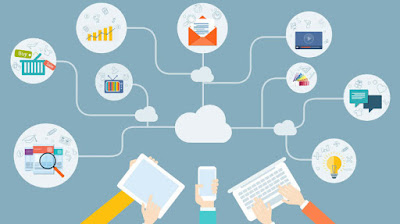Whether you manage a warehouse or an online retail store, e learning leaves a significant impact on knowledge retention, customer satisfaction, and business productivity. The new-age employees want to access information that is personalized, just-in-time, and accessible. Therefore, most of the retail organizations are shifting towards increasing productivity and business ROIs through technology-driven learning. Most organizations adopt e learning as a significant aspect of training & development processes.
Why is Traditional Training Not Effective Enough?
With changing market dynamics, retail companies are shifting their focus towards improving optimal quality products and flawless customer experience. A viable way to achieve this is through e learning. Several reasons why traditional classroom-based approach could not go well for retail workforce training include:
There is a constant update on the products and services delivered by retail organizations. The traditional method to train the workforce on product inventory and features is a time-consuming process, especially whenever there is any seasonal update. Consequently, employees fail to engage and retain for long, thereby affecting the overall business sales.
The retail sector faces a higher level of attrition as compared to other industries. Therefore, companies conduct employee onboarding programs at regular intervals that involve recurring costs, time, and effort.
How does E-learning help to Train Retail Workforce?
Today, e-learning is dominating the retail industry by evading challenges of classroom-based training- be it cost, accessibility, or convenience. Keeping the workforce abreast of new consumer products, services, and policies is key to organizational success. Enterprise e learning enables employees to undergo training on-demand, bridge skills-gaps, and improve sales. Several effective e learning solutions that cater to the retail sector training needs include the following:
The delivery of personalized training content on bespoke mobile devices enable learners to learn anytime, anywhere, and on the go. Several retail companies create e-courses on specific products and services which employees can access to hone their skills and meet customer expectations.
Companies also create and deliver short video nuggets that are easy to access and quick to digest. Consequently, employees learn more, engage better, retain for long, and stay productive at the workplace.
Considering the need to train the salesforce in an immersive environment effectively, companies adopt a simulation-based approach. As a result, sales employees can access 360-degree videos and simulations to learn about new product features and benefits, thereby fostering customer relations, driving sales, and overall business productivity.
For retail enterprises, there are several risks involved, such as risk management, workplace safety, safety hazards, and others. So, online training on regulatory compliance aids companies to comply with changing policies and enhance their brand presence in the market.
With technological advancements, retailers adopt e learning approach, which is flexible enough to cater to the pertinent training needs- be it onboarding, compliance, sales enablement, leadership training, and more.
Why is Traditional Training Not Effective Enough?
With changing market dynamics, retail companies are shifting their focus towards improving optimal quality products and flawless customer experience. A viable way to achieve this is through e learning. Several reasons why traditional classroom-based approach could not go well for retail workforce training include:
- Continuous change
There is a constant update on the products and services delivered by retail organizations. The traditional method to train the workforce on product inventory and features is a time-consuming process, especially whenever there is any seasonal update. Consequently, employees fail to engage and retain for long, thereby affecting the overall business sales.
- High attrition
The retail sector faces a higher level of attrition as compared to other industries. Therefore, companies conduct employee onboarding programs at regular intervals that involve recurring costs, time, and effort.
How does E-learning help to Train Retail Workforce?
Today, e-learning is dominating the retail industry by evading challenges of classroom-based training- be it cost, accessibility, or convenience. Keeping the workforce abreast of new consumer products, services, and policies is key to organizational success. Enterprise e learning enables employees to undergo training on-demand, bridge skills-gaps, and improve sales. Several effective e learning solutions that cater to the retail sector training needs include the following:
- Mobile-aided learning
The delivery of personalized training content on bespoke mobile devices enable learners to learn anytime, anywhere, and on the go. Several retail companies create e-courses on specific products and services which employees can access to hone their skills and meet customer expectations.
- Video-based learning
Companies also create and deliver short video nuggets that are easy to access and quick to digest. Consequently, employees learn more, engage better, retain for long, and stay productive at the workplace.
- Simulations
Considering the need to train the salesforce in an immersive environment effectively, companies adopt a simulation-based approach. As a result, sales employees can access 360-degree videos and simulations to learn about new product features and benefits, thereby fostering customer relations, driving sales, and overall business productivity.
- Compliance training
For retail enterprises, there are several risks involved, such as risk management, workplace safety, safety hazards, and others. So, online training on regulatory compliance aids companies to comply with changing policies and enhance their brand presence in the market.
With technological advancements, retailers adopt e learning approach, which is flexible enough to cater to the pertinent training needs- be it onboarding, compliance, sales enablement, leadership training, and more.




















